Advanced propulsion systems
Propulsion technologies play a pivotal role in achieving target velocity by producing higher thrust than drag for Earth-to-space transportation and enabling orbital transfer and attitude/altitude control for space systems.
Scramjet engines

Aerodynamic/aerothermal phenomena in axisymmetric scramjet
Scramjet engines, in particular, are a promising hypersonic airbreathing technology that offers considerable advantages over conventional rocket engines, owing to its ability to use oxygen in the atmosphere, thus removing the need to carry oxidisers. Scramjets operate in sequential flow processes; (1) hypersonic airflow capture by the intake; (2) airflow compression and deceleration to supersonic due to shock waves; (3) fuel injection and mixing into supersonic airstream; (4) fuel/air combustion due to chemical reactions in the combustor; and (5) expansion of reacted gas through the nozzle for thrust production. These processes crucially depend on complex aerodynamic and thermodynamic phenomena, requiring careful design based on thorough physical understanding.
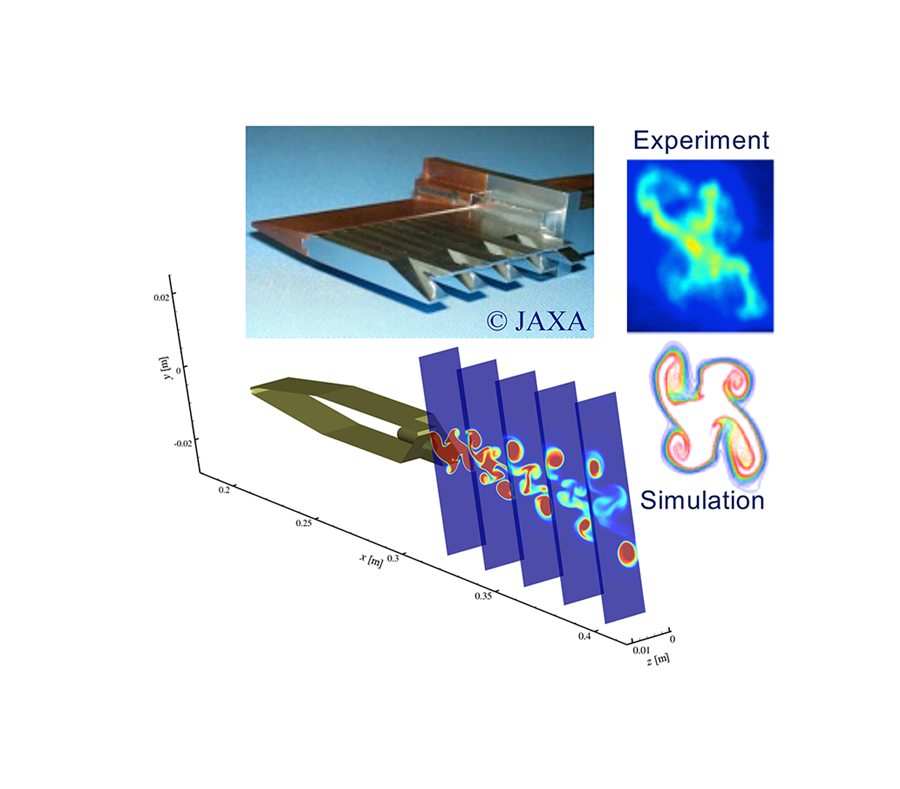
Fuel/air mixing using streamwise vortices (Ogawa and Kodera 2015)
We are conducting comprehensive research with particular focus on the key flow phenomena and technologies for economical and reliable space transportation. This project aims to realise scramjet-powered ascent flight, sponsored by the Japan Society for the Promotion of Science (JSPS) through KAKENHI 17K20144 “Aerothermal Analysis and Multidisciplinary Design Optimisation of Innovative Scramjets for Future Space Transportation”. We extensively perform high-fidelity CFD (computational fluid dynamics) simulations, multi-objective/multidisciplinary optimisation based on evolutionary algorithms and experimental testing in high-speed/high-enthalpy facilities, in cooperation with collaborators in Japan including JAXA as well as international partners in Australia, Canada, Hong Kong, Korea, Germany, Russia, and USA.
Combined cycle engines
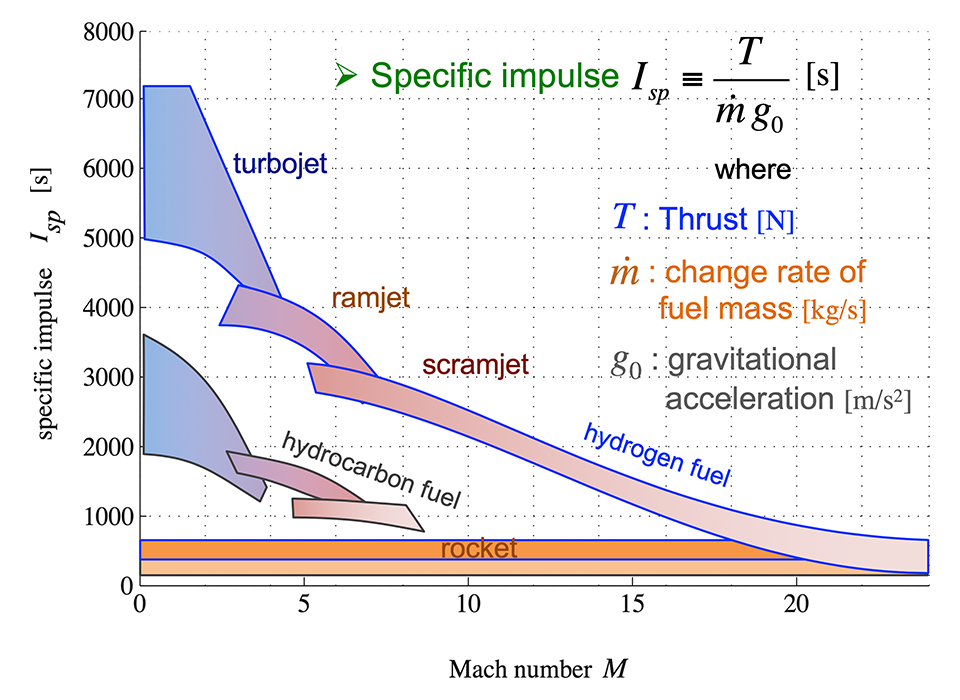
Specific impulse for rocket-based (RBCC) and turbine-based (TBCC) combined cycle engines (reproduced after McClinton 2008)
Hypersonic airbreathing propulsion, however, despite various advantages, is unable to power the vehicle from the ground to space by itself because it cannot produce thrust at lower speed than Mach 5 due to insufficient flow compression and at high altitude due to too low air density. Combine cycle engines pave the way for access-to-space using airbreathing propulsion for its ability to operate throughout the ascent trajectory, covering all speed and altitude ranges from take-off to space. It is an integrated propulsion system that combines various types of engines, e.g., rocket, ramjet and scramjet engines for RBCC (rocket-based combined cycle) propulsion, and turbojet, ramjet and scramjet engines for TBCC (turbine-based combined cycle) propulsion.
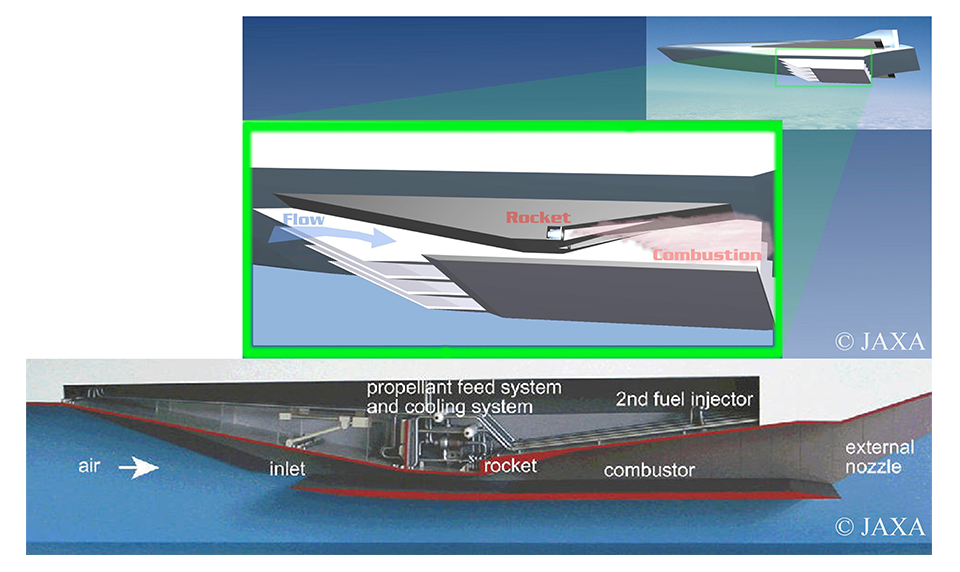
Spaceplane powered by RBCC (rocket-based combined cycle) engine
We have been conducting extensive numerical and optimisation studies on the RBCC combustor to gain physical insights into the flow behaviour and key design factors to achieve efficient operation and stable mode transition between the ramjet and scramjet modes. Other studies include the multi-objective design optimisation of the trajectory and control for RBCC-powered two-stage-to-orbit (TSTO) space transportation and pre-coolers for the TBCC propulsion system.
Electric propulsion
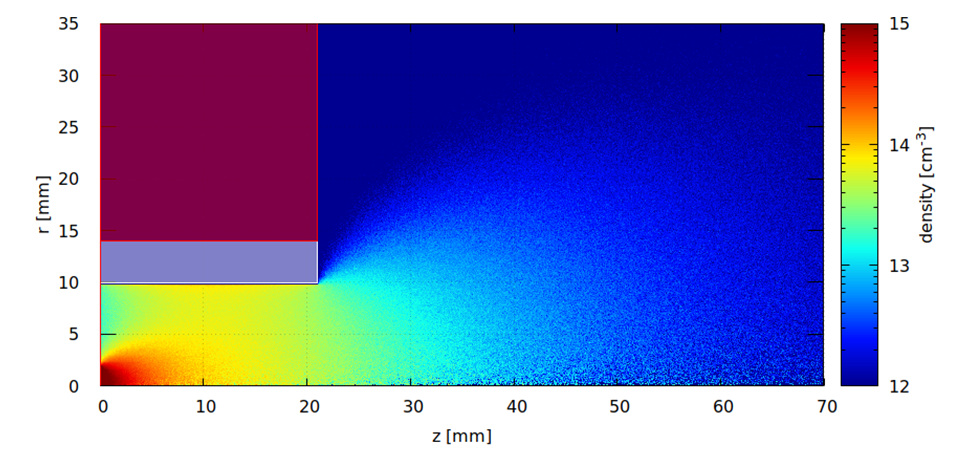
Neutral xenon density field of an optimised ion thruster (Matthias et al. 2019)
Efficient, reliable space propulsion is of increasing importance as space missions become more complex and challenging. Electric propulsion is drawing growing attention for its remarkable capability of efficient thrust production. Utilising electrostatic or electromagnetic forces, it features very high specific impulse (Isp), which lends itself to attitude/altitude control of spacecraft as well as deep-space missions owing to its ability to accelerate the vehicle to substantial velocity by continuous operation albeit low thrust. Typical technological challenges include downscaling the propulsion system and enhancing its durability, so that it can sustain efficiency in long duration operation within power constraints, which are tight for small/micro satellites and deep-space missions.
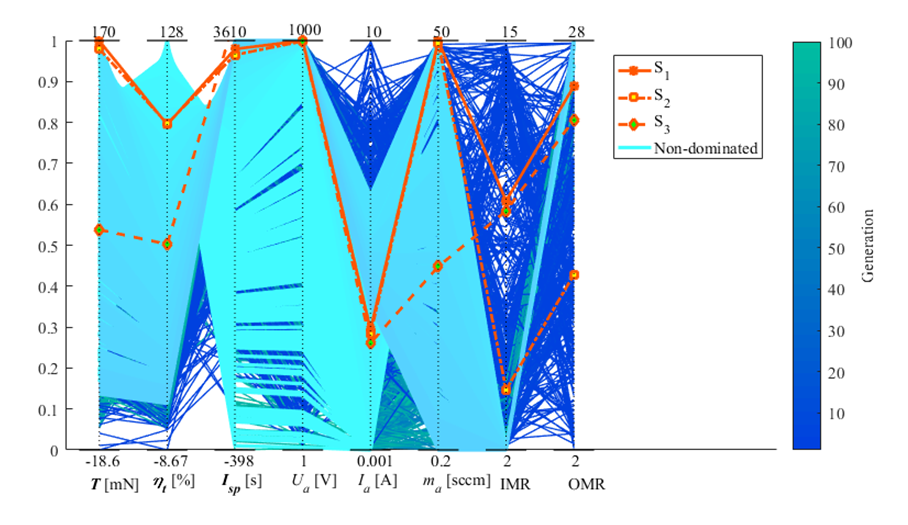
Parallel coordinate plot of ion thruster optimisation results (Yeo et al. 2020)
We have been conducting research on ion thrusters via multi-objective design optimisation incorporating analytical modelling and magnetic field simulation in international collaboration with Australia and Germany, where PIC (particle-in-cell) kinetic simulation is performed at The University of Greifswald to verify the optimisation results and acquire in-depth insights into the underlying physical mechanism.
References
- Ogawa, H. and Boyce, R. R., “Physical Insight into Scramjet Inlet Behavior via Multi-Objective Design Optimization”, AIAA Journal, Vol.50, No.8, pp. 1773-1783, 2012
- Ogawa, H. and Kodera, M., “Physical Insight into Hypermixer Injector Design for Fuel/Air Mixing Enhancement in Scramjet Engines”, Journal of Propulsion and Power, Vol. 31, No. 5, 2015, pp. 1423-1435
- McClinton, C. R., “High Speed/Hypersonic Aircraft Propulsion Technology Development”, RTO-EN-AVT-150, 2008
- Matthias, P., Kahnfeld, D., Schneider, R., Yeo, S. H., and Ogawa, H., “Particle-in-cell simulation of an optimized HEMP-Thruster”, Contributions to Plasma Physics, Vol. 59, No. 9, 2019, pp. e201900028
- Yeo, S. H., Ogawa, H., Matthias, P., Kahnfeld, D. and Schneider, R., “Multi-Objective Optimization and Particle-In-Cell Simulation of Cusped Field Thrusters for Micro-Satellite Platforms”, Journal of Spacecraft and Rockets, Vol. 57, No. 3, 2020, pp. 603-611


